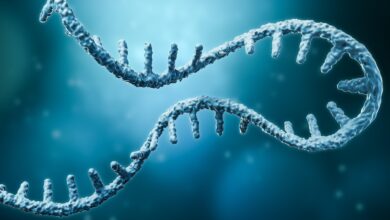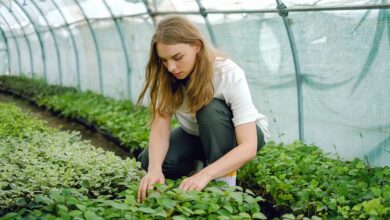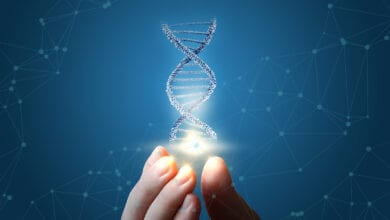Tai Chi Master Shares the Seven Secrets of Cultivating Qi Energy in the Body
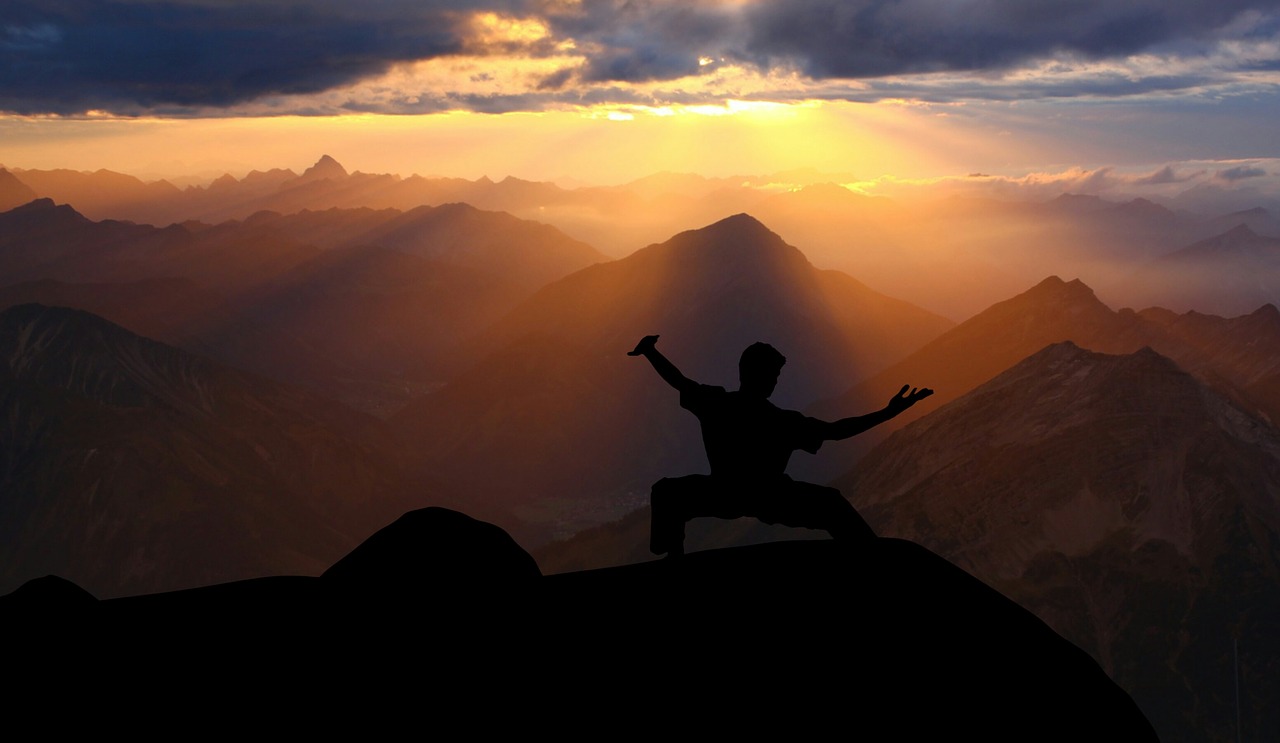
There are seven core principles for cultivating the powerful, innate healing energy known as Qi in the body. These practices will unlock your ability to harness this sacred force and direct it around the body at will for various healing and rejuvenation purposes. It can also be transferred to others if they are open and receptive to this type of healing.
Ancient Taoist masters spent entire lifetimes developing the science of Qi cultivation and mastering its use in the human form and this knowledge has been carefully preserved through thousands of years of transmission from master to disciple. In this day and age, this knowledge is shared rather freely and openly although it can still be difficult to find accurate, complete sources of information. The basics presented here by Dr. Greg Yuen offer a complete, fundamental picture of the practices and methods for becoming aware of and cultivating Qi in the body. Often times this core understanding is enough to allow seekers to begin using and experiencing the force in their lives immediately. Please note that the terms Qi, Chi and Ki are used throughout this introduction and article interchangeably — they all refer to the same concept/force.
Dr. Greg Yuen, M.D.
1. Belief — Believe in the Chi
2. Paying attention — Focus Your Mind on Your Body
3. Feeling/Relaxation — Feel Your Body and Relax the Tension
4. Grounding/Skying — Settle into the Ground and Connect to the Sky
5. Breathing — Abdominal Breathing
6. Visualization/Re-creation — Visualize or Re-create the Experience of Chi
7. Efficient Movement — Move from Your Legs, then Waist, then Arms
The cultivation of ki requires mind power. The first element of ki cultivation is “belief”. You must believe that you have ki. The Chinese believe that ki is everywhere and that all you have to do is tune into it. Ki is running throughout your body and all you have to do is to direct its flow. It is important to experience ki by having ki therapy done to you, by giving ki treatments, and by talking to those who are more experienced in ki and learn what they have experienced. I have heard many fantastic stories about what ki can do. For example, ki has been used to light up lightbulbs held in one’s hands. Ki has been used to make people move from a distance. You must cultivate your belief of ki and then your power with ki will grow.
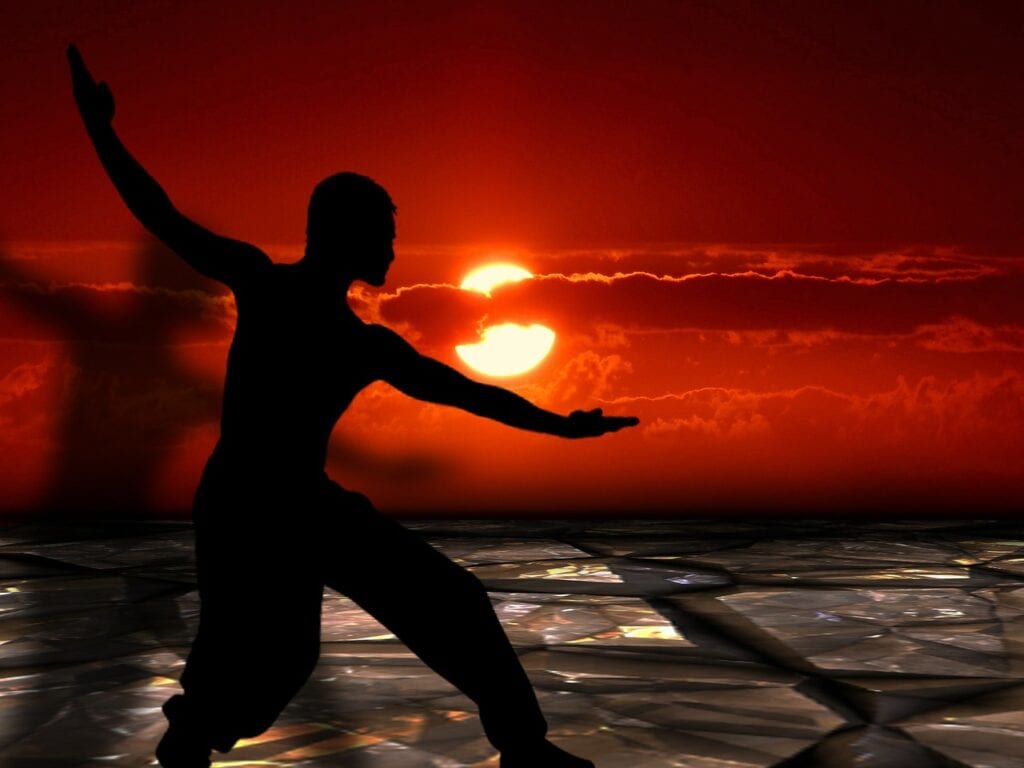
How many of you believe in the ki? What are some of your experiences with the power of ki? To experience the ki, rub your palms together and make sure you rub the centers of your palms against each other. You should feel a strong heat. Now hold your hands apart, as if cupping a small ball. You will continue to feel an after glow of heat. This is the ki.
The second element of ki cultivation is “attention”. You must be able to pay attention to your body to feel and produce ki. Paying attention is the essence of what meditation is about. It is learning to sharply focus your mind. You can produce very powerful ki if you can focus your entire mind on any given moment. The more you can totally focus your mind, the more you will produce ki. If you have distractions to your mind, then simply bring it back to focus on your ki.
The mind is like taking care of a baby. If you place the baby in the center of the room, he will crawl to the periphery. You simply bring him back to the center. So you do the same with your mind; you simply bring it back to your focus on the ki.
Let’s do an exercise to see how we do with focusing our mind. Sit comfortably and take some deep breaths. Close your eyes, not fully, but just so that you can see some light. Now I will ask you to put your attention on different parts of your body. (I will direct your attention to different body parts … right finger, left ear, right large toe, left thigh, etc.)
How difficult was this exercise? For most, this is not so difficult, but how often do we really focus good attention to our bodies? What you want to watch for is how you do not focus your full attention even though most of your mind does focus. If you can get your entire mind focused, you will develop more power with your ki.
The third element of ki cultivation is “feeling/relaxation.” I put “feeling” and “relaxation” together because to learn to relax, you must feel your body. This follows the second element of “attention” because in ki cultivation, you must pay attention to your body — body awareness. With that body awareness, you learn to relax. Progressive Muscle Relaxation is a technique that psychologists use to help patients relax. You could also use an audiocassette tape that guides you through parts of your body and telling the parts to relax.
A fabulous exercise I would like to share with you to learn to relax is “do-in” (). Both “Do” and “In” mean “to lead”or “to guide”. “Do-in” has to do with guiding the ki in your body. There are many books on do–in and many techniques of do-in. I would like to introduce you to two. First is to go over your whole body and feel it. May I have a volunteer? (To the volunteer: You have some experience developing body awareness? You have had massage in the past? Let me take your hand and let me just go over some pressure points. You know that you have 26 bones in your hand. Can you find and count all of these bones?)

This is what I mean by feeling your whole body completely. You know that you have two bones in your forearm. Can you feel the two bones and where they are? If you do this to your arms, then you can do it to your legs, your abdomen, your, chest, and your head. The back is the most difficult. For that I use a “ma roller”. (Demonstrate use of roller).
Doing twenty minutes of do-in is an incredible experience. Do-in is a precious secret that to me is worth millions of yen, but it’s so simple and it’s free, as long as you do it. Because of limited time today, we will not do the detailed do-in, but instead a more general form of do-in to get our energy moving.
First let’s stand with feet spread apart and arms held up to our sides and feel your body as it is. We will compare this feeling with the feeling after the completion of this exercise. Make your hand into a fist and use it to gently tap your muscles. Do arms, legs, abdomen, chest, head, backs, and bottoms. Now stand with feet apart and arms outstretched and feel our body again to compare. In my practice of taichi, I have dedicated my life to feel my whole body — from the top of my head to the tips of my toes, from the surface of my skin, to the depths of my bones. If you can feel your whole body in this way, you will experience your ki and your ki will flow harmoniously and lead you to great health. You will also become better skilled at healing others.
For developing this body awareness, I recommend stages of development. I had the fortunate opportunity of learning shiatsu and exchanging treatments with my shiatsu teacher for four years, once a week. These treatments were addictive and wonderful. Rather than simply putting yourself on the shiatsu mat and falling asleep, I recommend that any body therapy, like shiatsu or massage, can be a tool to learning the feeling in your body. Through the help of the masseur or shiatsu therapist, you can experience feelings in your body that you never knew before. After you have some experience with this through the body therapy, and then you can recreate these feelings when you work on yourself with the do-in. After you become skilled with the do-in, then you can use the same feelings when you do taichi or when you move around or exercise in your daily life. The final stage is being able to direct your energies when you meditate, just by your mind you can circulate ki throughout your body.
The fourth element of ki cultivation is “grounding/sky-ing”. This is remembering your relationship to heaven and earth. Grounding means letting yourself relax or settle into the ground when you are standing. Let’s try this.
Let yourself squat all the way down, keeping your feet flat on the floor. Be careful not to strain yourself and do not force yourself to go down; just go down as far as you are comfortable. It is important to keep your feet flat against the floor. If cannot go all the way down, you can practice at home by holding onto a chair or a door knob as you go down. Eventually you will be able to go all the way down. If you go all the way down and your heels come off the floor, you can hold onto the ground with your hands and rock back and forth; eventually your, feet will be able to be flat on the ground. Now shift your weight to one side and lift your other foot off the ground. Shift to the other side and lift the other foot. Now hold one leg out in front of you. Now hold out the other leg. Now keep very low, reach out with your leg to widen your stance, and shift your weight from one leg to the other outstretched leg. Do this on the other side. These grounding exercises may take a while to be able to do. Just do it at your pace and, believe me, you will be able to do it eventually.
Sky-ing is a word I made up to describe being aware of your relationship to heaven. While you are standing, imagine a string attached to your head and pulling from above. Let yourself bend your knees and feel the string pulling from above; feel your spine stretch. Then reset yourself by going up again and then bend your knees again. Feel the string pulling from above and feel your spine stretch.
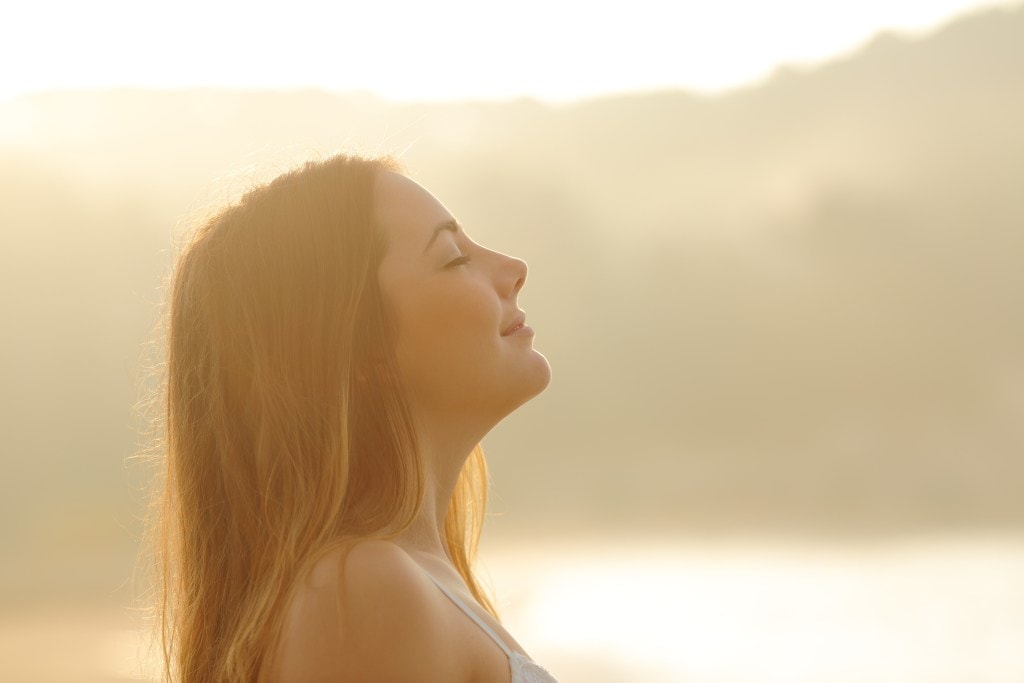
Now stand with your pelvis settled into the ground, knees slightly bent, and feel the string pulling from above and feel your spine stretch. This grounding and sky-ing helps you to better tune into the ki, like a radio antenna. It makes sense because being grounded means being relaxed into the ground. If you are more relaxed in general, more ki will flow. When you also connect to heaven and stretch your spine, you relax the pressure between your vertebrae and your nervous system can flow better.
The fifth element of ki cultivation is “breathing”. In martial arts or other spiritual practices, there are many forms of breathing. For the beginner, I recommend abdominal breathing or diaphragmatic breathing. In this type of breathing, when you inhale, you expand your lower belly. Your diaphragm contracts to push your belly out. The diaphragm is the muscle between your chest and your abdominal cavities. In abdominal breathing, when you exhale, you contract your lower belly.
Let’s put your hands on your lower belly, below your navels. Breathe in and expand your belly against your hands. Breathe out and collapse your belly under your hands. When you breathe in this way, you fill your lungs with more oxygen so than when you breathe with your chest. In the West, we tend to breathe with the chest. In the East, you have such traditions of martial arts and you know more about the “hara” and breathing into your lower belly. When you have more oxygen in your blood, you are more likely to be relaxed because you are not tense to fight for air. Abdominal breathing also has benefits for gastric motility and digestion.
You can direct your breath to your palms, but this gets into the sixth element of ki cultivation –“visualization”. Visualization works best after your mind has connected to your body through the do-in, paying attention to the feeling and relaxation in your body. When your mind is integrally connected to your body and you visualize, then your visualization will more powerfully affect your body.
Let’s imagine a jar full of honey. Imagine putting your arm in and feeling the honey and feel it drip off when you pull your arm out. Do that with the other arm. Now step your legs into the honey jar and feel the honey drip off when you pull your leg out. Then jump in the honey jar and move around in the honey. Feel how sticky it is over your whole body.
The seventh element of ki cultivation is what I call “efficient movement”. In taichi we learn to use our body efficiently, to conserve as much energy as possible, to be lazy, if you will, but to still get the job done. The way we do this is to first use more of our leg power, whenever possible, whenever we use our bodies. Once we use our legs as much as possible, then we try to use our torso twisting as much as possible. Only in the end, after using our leg and torso power, do we use any arm power.
Get a partner and stand with your left leg forward. Place your palms against your partner’s. Now use your legs to go back and forth. First one person will push and the other will receive; then the other person will push and his partner will receive. Just hold your hands up in front of you, but let your legs do the work. You can use your legs whenever you go through a swinging door. Hold your arm up, but let your legs do the work to push open the door.
Another movement to illustrate efficient movement is a technique called “cloud hands” in taichi. Stand with your feet spread apart. Now shift your weight from one foot to the other. Go back and forth. Now when you shift your weight to the left, turn your torso to the left and let your arms swing out loosely without using any arm strength. Shift weight to the right and let the torso swing the arms out to the right. Now watch the flow of energy come from your legs, through, your torso, and then to your hands. Shift to the left, turn your torso to the left and point with your left index finger to the left. Now do it with the right side. Now do the “cloud hands” movement. Turn to the left and circle your left arm to the left. Turn to the right and circle your right arm to the right. Do this circling alternately and shift back and forth smoothly. Use the least amount of energy to do this as possible. This is the same principle used by those who play tennis or golf. When you follow the flow energy with your mind through your body, from the legs, through the torso, and to the fingers, you create ki. You become in touch with the ki and you use the ki efficiently.
I would like to end this lecture with an experience of ki. We are going to apply all the elements of ki cultivation in this exercise. Let’s rub our palms together. Feel the centers of your palms rub together and you will feel a lot of heat. Now separate your palms and continue to feel the energy or heat between your palms — this is the ki. “Believe” that you will feel great ki between your palms. “Pay attention” to your palms and focus your mind there to produce and feel the ki. “Feel” your arms and “Relax” them as much as possible as you let the ki go to your palms. Let yourself relax into the ground with “Grounding” and let your spine stretch with “Sky-ing”. “Breathe” deep into your lower belly and “Visualize” your breath going to your palms. Now let your energy ball between your palms grow larger and play with it in your hands. Keep doing all the things we talked about … believe, pay attention, feel and relax, ground, sky, breathe, visualize. Now find a partner and join your ki ball with their ki ball and both feel the ball between your hands. Next get another pair of individuals and make a bigger ki ball. (This exercise progresses where the whole group makes a giant ki ball. We all go inside the ki ball and then hold the giant ki ball in the middle of the group. We can also do put individuals, one by one, inside a ki ball held together by others.)
You can take a piece of the big ki ball home as your souvenir. Just remember that you can tune into the ki at any moment and remember the key elements of ki cultivation … belief, paying attention, feeling your body and relaxing, grounding, sky-ing, breathing, visualizing, using your legs and torso when you can.

